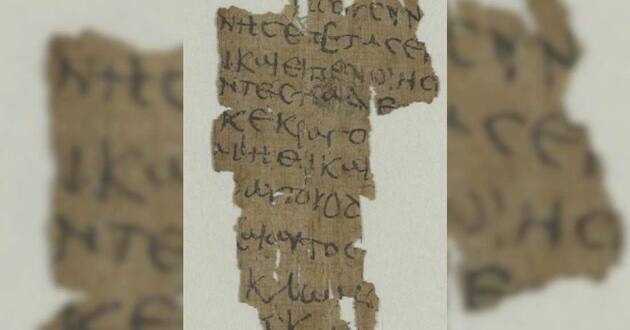Ancient manuscript details childhood of Jesus

A papyrus dating back to the fourth or fifth century is the oldest-ever manuscript with details about the childhood of Jesus, German researchers say. The document had been stored at a library in Hamburg, Germany,
“The fragment is of extraordinary interest for research,” said Lajos Berkes, a professor and one of the researchers who decoded the document said in a press conference. “On the one hand, because we were able to date it to the fourth to fifth century, making it the earliest known copy. On the other hand, because we were able to gain new insights into the transmission of the text.”
It was thought to be part of an everyday document, such as a private letter or a shopping list, because the handwriting seems so clumsy. “We first noticed the word `Jesus’ in the text,” he said. “Then, by comparing it with numerous other digitized papyri, we deciphered it letter by letter and quickly realized that it could not be an everyday document.”
Berkes said the document is a fragment of the discredited Gospel of Thomas, an apocryphal book that was not included in the Bible. The gospel offers details about Jesus’ life as a child before his ministry. The poor handwriting in the document led Berkes to believe the manuscript was made as part of a writing exercise in a monastery or a school.
Although there are only a handful of words in the manuscript, researchers were able to determine that it is retelling the apocryphal story of the “vivication of the sparrows.”
“Jesus plays at the ford of a rushing stream and molds 12 sparrows from the soft clay he finds in the mud,” researchers said in a news release. “When his father Joseph rebukes him and asks why he is doing such things on the holy sabbath, the 5-year-old Jesus claps his hands and brings the clay figures to life.”
The Gospel of Thomas was discovered in 1945 in Egypt. It contains 114 sayings attributed to Jesus and is considered a Gnostic gospel, espousing a Gnostic viewpoint of Christianity. Gnostic Christianity was found by early church leaders to be contradictory to the teachings of Jesus and Paul and thus it is not included in the Bible.
–Alan Goforth | Metro Voice







